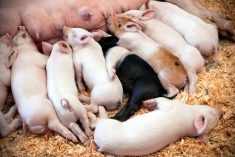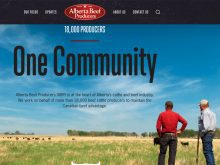LETHBRIDGE – Canada is returning as a major beef exporter after being shut out of the world marketplace for more than two years, said an official with the Canadian Beef Export Federation.
Michael Young, CBEF’s vice-president of international affairs, said Canada is a small cattle producer by comparison with many countries but it is a large exporter sitting at the No. 5 position.
It remains heavily market dependent on the United States, where 80 percent of exports are sent. It sends 11 percent to Mexico and three percent to Hong Kong, with a smattering in some smaller markets, Young said.
Read Also

Sheep sector navigates changes in traceability
The sheep sector is developing advanced traceability systems and addressing ongoing challenges in accessing veterinary drugs and treatments.
Japan reopened its market a few weeks ago to beef from animals younger than 21 months but it will take time to regain lost market share.
Strong competition in the export market is coming from South America and Australia.
While Canadian beef was banned, Australia took over with grain-fed beef, said Young.
Australia and New Zealand ship mostly grass-fed beef. However, Australia is emerging as a major grain-fed producer without the hindrance of BSE or foot-and-mouth disease. Australia exports 54 percent of its beef to Japan and South Korea.
It recently increased its cattle checkoff to $5.20 Cdn per head, which added $11.2 million to the country’s beef promotion program, Young said. It spends about $19 million promoting beef worldwide.
“The majority of that extra money is earmarked for Japan and South Korea,” Young said.
During a recent trip to Japan, Young saw Australian beef promotions in every retail outlet he visited.
“They are serious about protecting their business,” he said.
On the other hand, Australia is recovering from a record drought and it may be reaching production capacity in terms of land base and grain supplies.
The U.S. remains the most lucrative market in the world and relies mostly on domestic production to fill its beef needs.
It shipped about 10 percent of its production before BSE closed its borders in December 2003. It has launched broad-based promotions in Asia to rebuild what was lost.
It still has some administrative issues and lags behind Canada with its national identification and age verification schemes. Recently the U.S. Department of Agriculture said it might not be ready to launch these programs until 2009.















